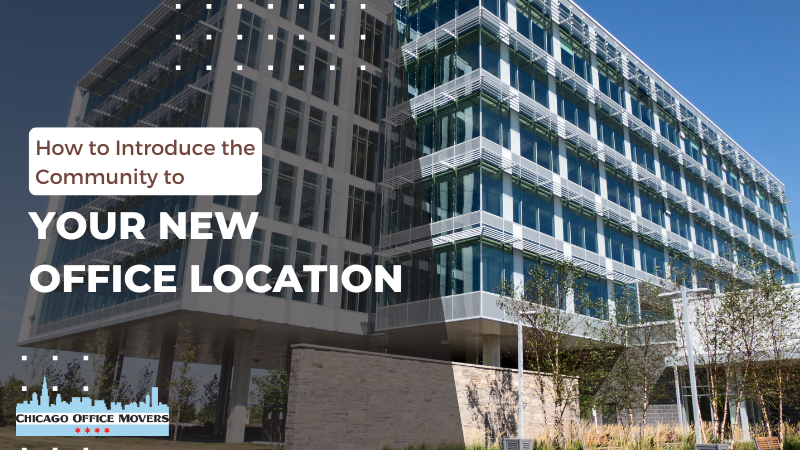
How to Plan a Last-Minute Office Move in Chicago (Checklist + Timeline)
How to Plan a Last-Minute Office Move in Chicago (Checklist + Timeline)
Written by Kari-Ann on . Posted in Corporate Relocation, Office Moving
If your business is facing a sudden office move in Chicago, you are probably feeling a mix of urgency and stress. That is completely normal. With the right planning and the right team, even a last minute relocation can happen smoothly without disrupting your work or client relationships. In this post, we will walk you through how to book and complete a last minute office move in Chicago, highlight common challenges you might face in the Loop or West Loop and provide a timeline and checklist to make the process manageable.
Why Last Minute Moves Happen
From our experience working with Chicago businesses, there are several common reasons for sudden moves. Unexpected lease issues can force companies to leave earlier than planned. Building emergencies such as HVAC failures, water leaks or other structural problems may make the space unusable. Rapid business changes such as mergers, acquisitions, or sudden growth often create the need for a larger or smaller footprint. New hybrid work policies may prompt a move to a more efficient office. Sometimes a prime location opens up and businesses want to seize the opportunity immediately.
Whatever the reason, when time is limited, you need a partner who understands the unique challenges of Chicago. High rise elevators, loading dock rules, curbside permits, and traffic can all impact your move. If any of these are overlooked, the cost in time and money can quickly rise.
For additional strategies to make a rushed move smoother, check out our guide on 5 Last-Minute Office Moving Tips.
Step One: Book Your Moving Team Immediately
The first thing you should do is secure a licensed and insured commercial mover that specializes in office relocations in Chicago. Not all moving companies handle high-rise buildings or commercial IT equipment, so it is important to confirm that your mover has experience with these challenges.
When evaluating movers, consider these points:
- Can they provide full service including packing, loading, transporting, and unpacking?
- Are they experienced with servers, computers, and other technology?
- Can they secure freight elevators and loading docks quickly? Availability in Chicago can be limited, especially in Loop high-rises.
- Do they handle permits and parking requirements for moving trucks?
- Are evening or weekend moves available, and are there extra charges?
When speaking with moving companies, ask:
- What is your earliest availability for our move?
- Are you certified to move in high-rise buildings in Chicago?
- Can you manage IT and server relocation?
- Will you handle permits and dock reservations?
- Are there additional fees for after hours or weekend moves?
If the mover hesitates on any of these points, keep looking. In Chicago, familiarity with local building rules is crucial for a smooth last-minute move.
Step Two: Build a Timeline
Even when time is short, having a structured timeline ensures nothing is missed.
For a 30-day move:
- Week one: Hire movers, finalize new office layout, define move days, assign internal team.
- Week two: Pack non-essential items, update vendors, confirm building logistics such as elevators and permits.
- Week three: Back up IT, label workstations, finalize furniture arrangements.
- Week four: Move week. Unload, set up workstations, test technology, and settle in.
For a seven-day move:
- Day one: Confirm mover, notify staff, finalize office layout.
- Days two to three: Pack essential items, back up IT.
- Days four to five: Move and unload.
- Days six to seven: Set up workstations, test phones and internet, resume operations.
For a 48-hour move:
- Hour zero: Confirm mover, reserve elevators and docks.
- Next 24 hours: Pack critical items, disconnect technology.
- Final 24 hours: Move, set up urgent teams, reconnect IT, and resume operations.
Assign one person as move coordinator and one as IT lead. Department heads should manage packing and labeling for their teams to keep everything organized.
Step Three: Overcome Chicago Challenges
There are specific challenges that Chicago businesses face during a last minute move.
Elevator and loading dock scheduling can be restrictive. Many buildings only allow freight elevator use outside of business hours or on weekends. Truck clearance can also be an issue.
Permits and parking for moving trucks may be required downtown. Make sure your mover is familiar with local regulations and can handle this.
Technology downtime is a major concern. Large company office moves can cost thousands per minute of downtime if not managed carefully. Make sure computers, servers, and phones are part of your move plan from day one.
Consider furniture and office layout carefully. Place departments that generate revenue or serve clients first. If you are moving to a smaller office because of hybrid work, plan desk and conference room arrangements in advance.
Traffic in Chicago can also cause delays. Schedule your trucks for early morning, late evening, or weekends to avoid rush hour.
Step Four: Checklist
Here is a practical checklist for your team:
Pre Move Tasks
- Hire a licensed and insured commercial mover with experience in Chicago
- Reserve elevators and loading docks at old and new office
- Secure certificates of insurance if required
- Assign move coordinator, IT lead, and department leads
- Communicate move details to staff
- Inventory all technology, furniture, and equipment
- Label workstations and equipment
- Decide what furniture to move, donate, or recycle
- Back up IT and schedule internet and phone setup
- Confirm truck clearance and parking permits
- Update vendors, clients, USPS, and online listings
Move Day Tasks
- Confirm plan with movers
- Shut down IT, pack equipment, and move critical items first
- Load trucks in a planned sequence
- Unload and set up key workstations at new office
- Test technology and network
- Conduct final walkthrough of old office and return keys
- Post Move Tasks
- Check all workstations and equipment
- Notify clients and vendors of the new address
- Confirm mail forwarding and utilities
- Review budget and expenses
- Conduct internal debrief
- Close out old lease obligations
Pricing and Budget
For a small office under two thousand square feet, budget around three to ten thousand dollars depending on complexity. A mid sized office between five thousand and ten thousand square feet typically costs ten to thirty five thousand dollars. Large corporate floors or high rise buildings with heavy IT infrastructure can cost twenty five thousand or more. Remember that overtime and after hours can add to costs. Downtime costs are also important to consider.
For insights on hidden costs that often catch businesses off guard, read our article on Hidden Costs of Moving a Business.
Contact Chicago Office Movers For a Last Minute Office Move in Chicago and Suburbs
If your business is racing against the clock for a last-minute move, you don’t need just any moving company—you need Chicago Office Movers, the city’s number one office relocation experts. We know Chicago’s streets, buildings, and logistics better than anyone. From securing freight elevators in the Loop to navigating downtown permits, we handle the details so your team doesn’t miss a beat.
Every move is different, and we treat it that way. Whether it’s relocating tech-heavy workstations, delicate furniture, or coordinating a multi-floor high-rise move, we plan, pack, and execute with precision. Your office stays running, your deadlines stay intact, and your stress disappears.
Call Chicago Office Movers today at 312-244-2246 and see why businesses across Chicago trust us to make even the toughest moves feel effortless. Your office is moving—let’s make it seamless.
Chicago Office Movers FAQs
How late can I schedule movers in Chicago?
What is the average cost for office movers in Chicago?
- Small offices (under 2,000 sq. ft.): $3,000 – $10,000
- Mid-size offices (5,000 – 10,000 sq. ft.): $10,000 – $35,000
- Large corporate floors or high-rises with heavy IT: $25,000+
How do you announce an office relocation?
- Send an email to clients and vendors at least a few weeks before the move.
- Update your website, social media profiles, and Google Business Profile with the new address.
- Place a notice at your current office and in common areas.
- Update mailing addresses with USPS, suppliers, and service providers.
- For internal staff, hold a short meeting or send a detailed email with moving schedules, floor plans, and new office protocols.
Contact Us
Related Services
- Corporate Moving
- Commercial Moving
- Reliable Commercial Storage
- Specialty Commercial Moving
- Furniture Assembly
- Movers for Office Renovation
- Machinery Moving
- Library Moving
- Lab Moving
- Server Room Moving
- Office Movers in Rosemont, IL
- Commercial Moving in Bolingbrook, IL
- Commercial Movers in Naperville, IL
- Commercial Movers in Des Plaines, IL
- Commercial Moving Services in Aurora, IL
- Schaumburg Office Movers
- Commercial Moving Services in Oakbrook, IL
- Commercial Movers in The North Shore
- Commercial & Office Moving Services Deerfield, IL
- Commercial & Office Movers in Hinsdale, IL
- Elk Grove Village Commercial Movers
- Furniture, Fixtures and Equipment Services
- Commercial Mover in Lincolnshire, IL
- Office Packers in Lincolnshire, IL
- Office Decommissioning in Lincolnshire, IL
- Professional Movers in Downers Grove, IL
- Moving Company in Chicago, IL

Director of Marketing & Development
Office: (847) 621-5176
Cell: (312) 497-3203
At Chicago Office Movers, Kari-Ann is our Director of Marketing & Development. As the master of visibility, she is responsible for all things Branding and Marketing related. Kari-Ann comes to us with experiences in Marketing for a multi-brand and multi-location company, the service industry, non profit marketing event planning and fundraising, and retail management. She is the Chair of the Board for the Schaumburg Business Association 2021 & 2022, a member of the Elk Grove Village Chamber Board of Directors, and past chair and top fundraiser for the Northwest Suburban Walk To End Alzheimer’s.
Kari-Ann received her Bachelor of Business Administration in Marketing from Western Michigan University. She is Master Certified in Constant Contact Email Marketing and has held numerous social media training classes.



















